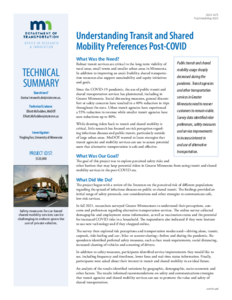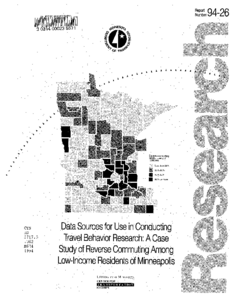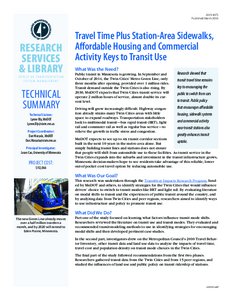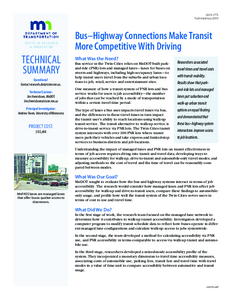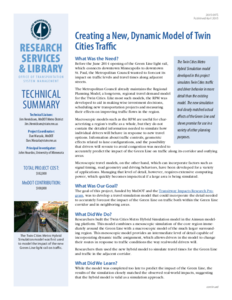Data sources for use in conducting travel behavior research : a case study of reverse commuting among low-income residents of Minneapolis: Final Report
Date Created
1994
Report Number
94-26
Description
Understanding post-COVID safety concerns toward the use of transit and shared mobility in Greater Minnesota
Date Created
2023-04
Report Number
2023-16
Description
Rural Community Transit Strategies: Building on, Expanding, and Enhancing Existing Assets and Programs
Date Created
2023-02
Report Number
2023-08
Description



